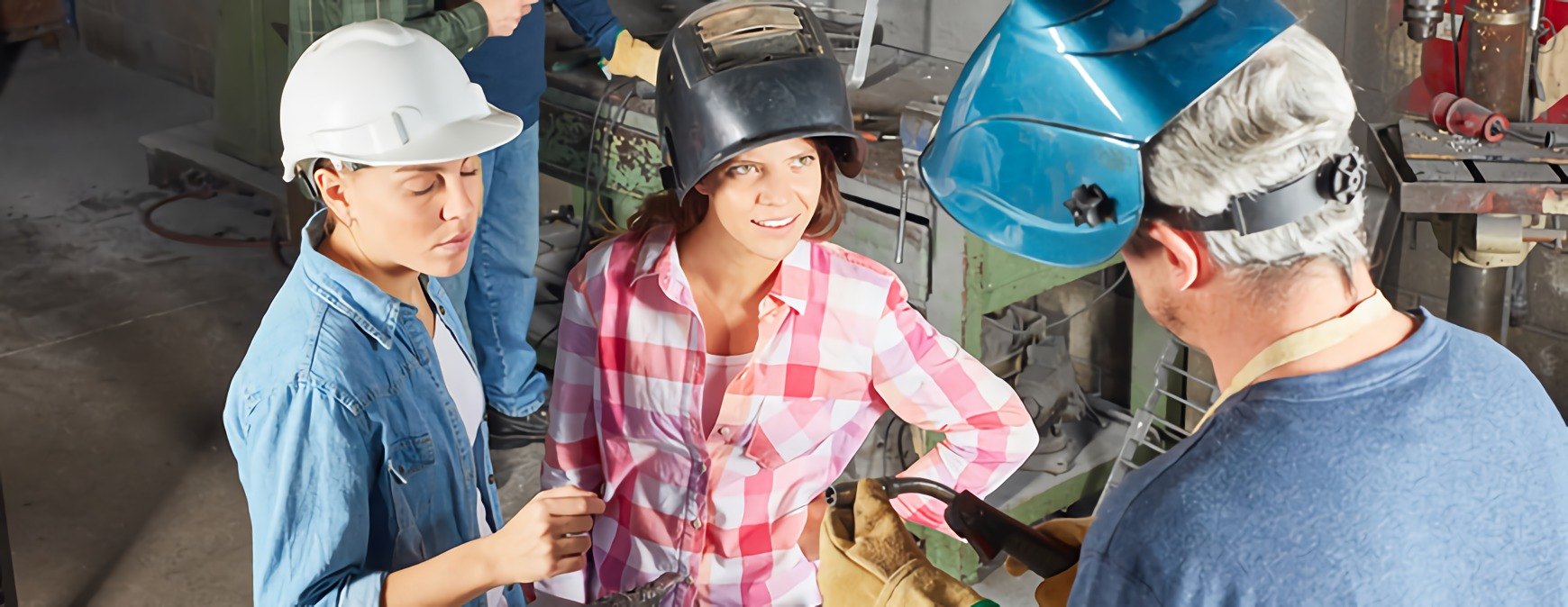TWS is a Great Training Option for Everyone
Learn more about how we can prepare you to advance your career.
Oftentimes welded structures and products are subject to a certain amount of force. How can one make sure his or her welding work won’t fail under pressure? While it’s important to know how to establish an arc and handle an electrode, understanding the mechanical properties of the materials being used can ensure the strongest, toughest welds possible. 1
Mechanical Properties of Metals Definition
The measurable properties that allow a metal to resist external forces without failing are its mechanical properties. Heat can alter the mechanical properties of any metal like making a soft metal hard and then soft again. Fusing metals with compatible mechanical properties is an important welding skill because it can affect the product.
General Mechanical Properties of Metals
Following are some of the most common mechanical properties of metals.
Hardness
A material’s power to resist a permanent change in shape when acted upon by an external force is known as hardness. 2 For example, hard metals are used to make drills and files. Heat can decrease the hardness of some metals, and cold can increase it in others. A metal’s hardness can be used to identify its strength and quality of heat treatment. 3
Have You Considered a Career in the Skilled Trades?
Fill out the form to recieve a no obligation info packet.
Brittleness
Brittleness is the likelihood that a material will fail or fracture under a relatively small shock, force, or impact. 4 Hardness and brittleness have a direct relationship as a metal’s hardness is increased so does its brittleness. A brittle material cracks in a way that it could be put back together without any deformation.
Ductility
When you bend a piece of aluminum foil, it usually remains that way because it is ductile. Ductility is the capability of a metal to be permanently bent, twisted, or otherwise manipulated without breaking or cracking. Soft steel, copper, aluminum, and zinc are all considered ductile metals. 5
Toughness
Toughness is the capacity of a metal to not break when a significant force is applied. 6
Strength
A metal’s ability to resist deformation is known as its strength. Strength is quantified in four ways:
- Tensile Strength: A metal’s ability to resist forces attempting to pull it apart.
- Compressive Strength: The capability of a metal to withstand being crushed.
- Shear Strength: The capacity of a metal to tolerate forces trying to slice or cut it apart.
- Torsional strength: The ability of a metal to resist forces attempting to twist it. 7
Why Welders Need to Know the Mechanical Properties of Metals
Students may get some basic knowledge of the mechanical properties of metals during their welding training. This knowledge can allow a welder to determine the range of usefulness of a metal and the service that can be expected from it. 8 It can also enable a welder to construct a safe, sound structure that meets engineering specifications. 9
1 – Title: Welding Principles and Applications; Author: Larry Jeffus; Delmar Cengage Learning; Seventh Edition; Textbook page 641
2 – https://me-mechanicalengineering.com/mechanical-properties-of-metals/
3 – Title: Welding Principles and Applications; Author: Larry Jeffus; Delmar Cengage Learning; Seventh Edition; Textbook page 643
4 – https://me-mechanicalengineering.com/mechanical-properties-of-metals/
5 – https://me-mechanicalengineering.com/mechanical-properties-of-metals/
6 – https://me-mechanicalengineering.com/mechanical-properties-of-metals/
7 – Title: Welding Principles and Applications; Author: Larry Jeffus; Delmar Cengage Learning; Seventh Edition; Textbook page 643-644
8 – http://www.totalmateria.com/Article53.htm
9 – Title: Welding Principles and Applications; Author: Larry Jeffus; Delmar Cengage Learning; Seventh Edition; Textbook page 643






